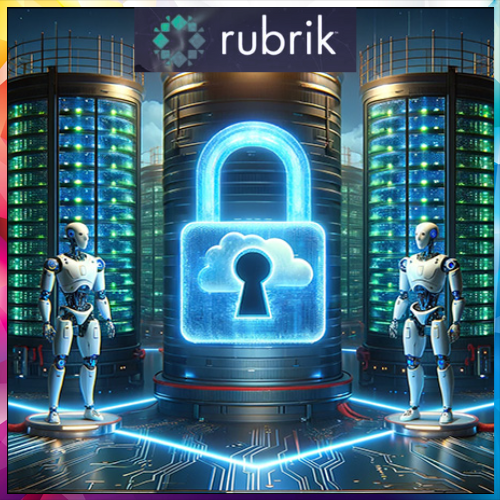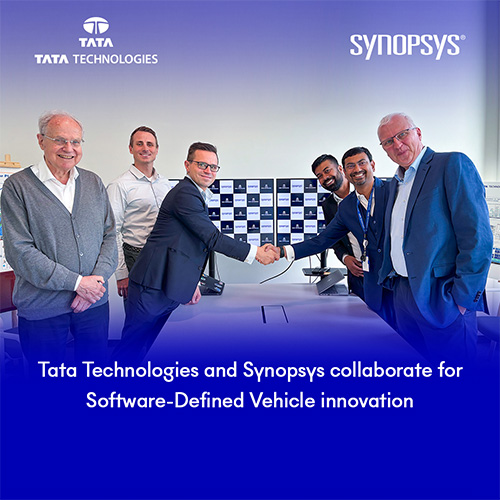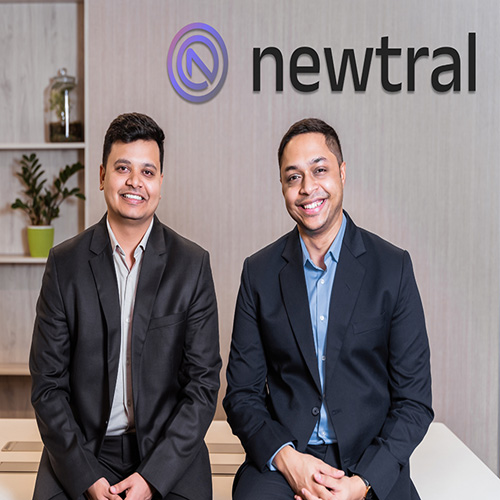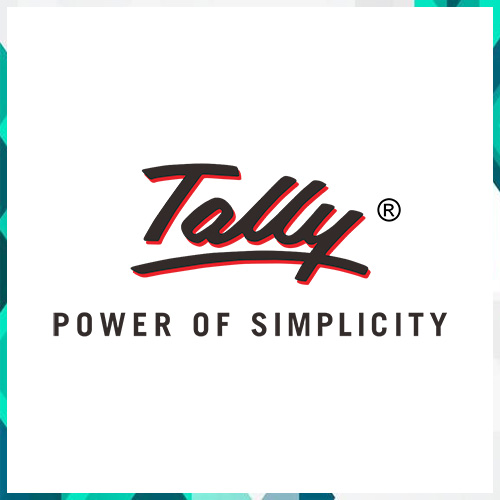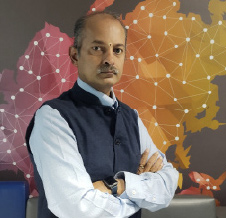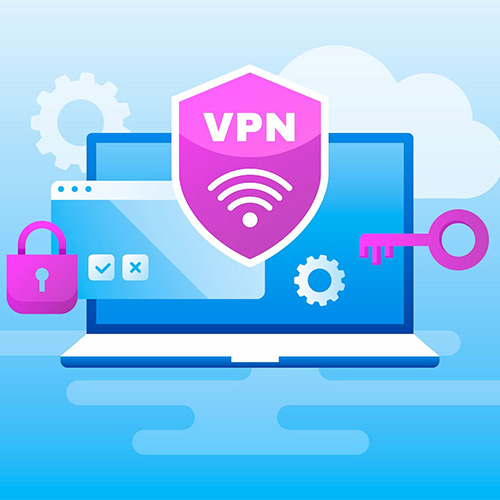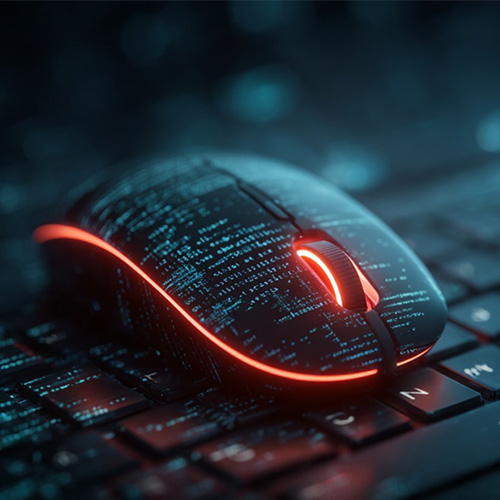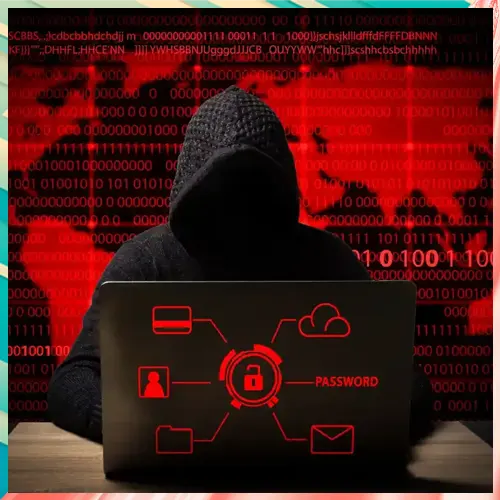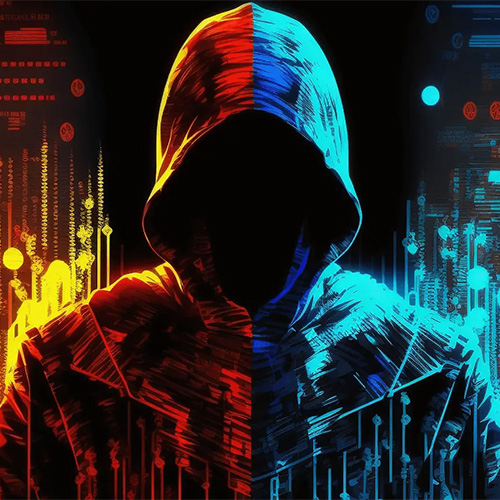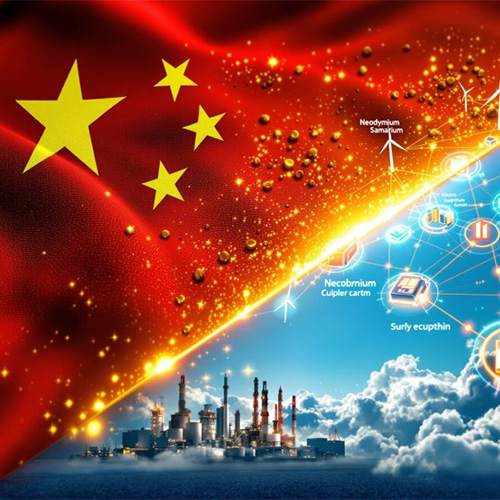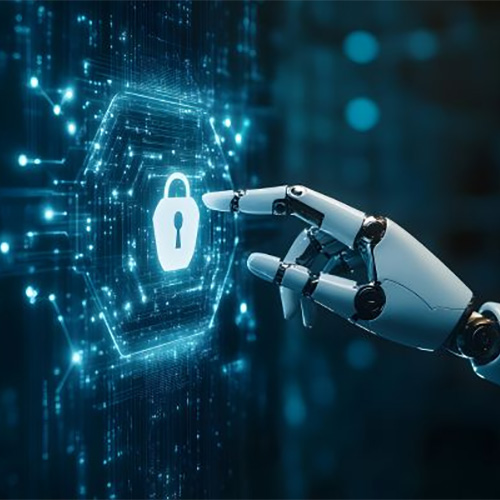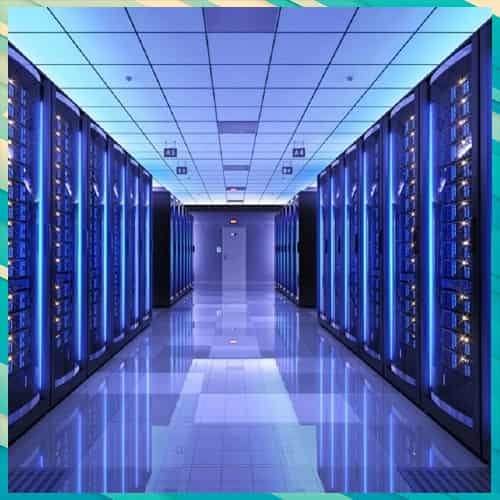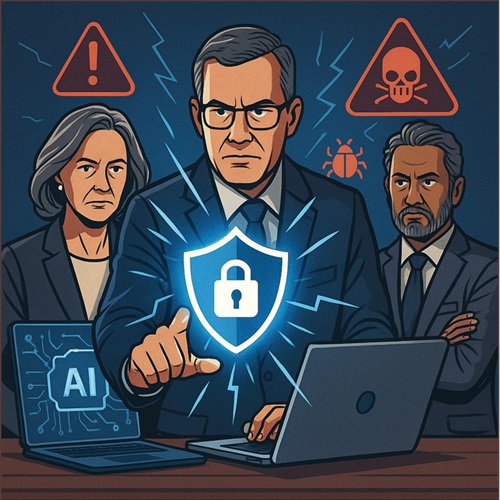
AT VARINDIA, WE RECOGNIZE THE EVOLVING AND CRITICAL ROLE THAT CIOS, CTOS, AND CXOS PLAY IN TODAY’S FAST-PACED TECHNOLOGICAL LANDSCAPE. AS ENTERPRISES NAVIGATE INCREASINGLY SOPHISTICATED CYBER THREATS AND COMPLEX DIGITAL TRANSFORMATIONS, THE STRATEGIC USE OF ARTIFICIAL INTELLIGENCE (AI) HAS BECOME A KEY PRIORITY FOR LEADERSHIP TEAMS. TO GAIN DEEPER INSIGHT INTO HOW THESE SENIOR EXECUTIVES ARE LEVERAGING AI AS A POWERFUL DEFENSE MECHANISM AND ENABLER OF BUSINESS RESILIENCE, WE ENGAGED IN DETAILED CONVERSATIONS WITH SOME OF THE COUNTRY’S MOST RESPECTED TECHNOLOGY LEADERS. THEIR PERSPECTIVES SHED LIGHT ON REAL-WORLD APPLICATIONS, CHALLENGES, AND THE FUTURE OF AI-DRIVEN CYBERSECURITY IN ENTERPRISE ENVIRONMENTS.
In today's increasingly digital world, artificial intelligence (AI) is rapidly transforming the cybersecurity landscape. While AI offers enhanced capabilities to detect and prevent threats, it also provides sophisticated tools for cybercriminals to exploit.
This duality places unprecedented pressure on organizational leadership, especially the C-suite executives (CXOs), to ensure resilient cybersecurity postures. The role of CXOs—including CEOs, CIOs, CISOs, and CTOs—is critical in fortifying defenses against AI-driven cyber threats.
UNDERSTANDING AI- DRIVEN CYBER THREATS
AI-driven cyber threats leverage machine learning, natural language processing, and automated decision-making to launch more targeted, faster, and more complex attacks. These include deepfake-based social engineering, AI-generated phishing emails, intelligent malware that adapts to its environment, and automated vulnerability scanning tools. Traditional security systems often struggle to keep pace with the scale and sophistication of these attacks, necessitating a proactive and strategic approach from the top of the organizational hierarchy.
CXO RESPONSIBILITY: BEYOND TECHNOLOGY
The responsibility of defending against AI-enhanced threats no longer lies solely with the IT department. CXOs play a pivotal role in integrating cybersecurity into the broader business strategy. They must understand that cybersecurity is not a technical challenge alone—it is a business risk that can impact operations, reputation, and financial standing.
For instance, the CEO must drive a culture of cybersecurity awareness across the organization, recognizing that human error remains a key vulnerability. The CISO must lead in adopting advanced security frameworks that integrate AI-based defense mechanisms. The CIO and CTO, meanwhile, are responsible for ensuring that infrastructure, applications, and services are built and maintained with robust security in mind.
BUILDING A UNIFIED SECURITY STRATEGY
CXOs must collaboratively create a comprehensive, organization-wide cybersecurity strategy. This strategy should include:
AI-Powered Defense Systems: Leveraging AI tools for threat detection, behavior analysis, and automated response helps preempt attacks. These tools can monitor systems 24/7, flag unusual behavior, and even respond to incidents without human intervention.
Incident Response and Recovery
Plans: An effective strategy should include clearly defined protocols for responding to AI-driven incidents. CXOs must ensure the organization has the agility to quickly adapt, recover, and learn from any breach.
Zero Trust Architecture: Moving away from perimeter-based defenses, CXOs should advocate for Zero Trust models, where all users, devices, and applications are treated as potential threats until verified.
Third-Party Risk Management: Vendors and partners can be weak links in the security chain. A rigorous evaluation of third-party cybersecurity practices is essential, particularly as AI-based attacks may exploit these external relationships.
DATA GOVERNANCE AND ETHICAL AI USE
AI-driven defense strategies require vast amounts of data. The CXO team must ensure that this data is collected, stored, and used ethically and in compliance with data protection regulations.
CIOs and CDOs (Chief Data Officers) must ensure transparency, data quality, and privacy, while also being vigilant about the potential misuse of AI tools within their organizations.
Moreover, ethical considerations in deploying AI tools—particularly those that make autonomous decisions—must be addressed at the executive level. CXOs should advocate for explainable AI, auditability, and bias mitigation in AI systems.
INVESTING IN TALENT AND INNOVATION
To stay ahead of evolving threats, organizations need top cybersecurity talent and continuous innovation. CXOs must champion investments in training programs, partnerships with academic institutions, and internal innovation hubs.
The CIO and CTO, in particular, should be looking at how cutting-edge technologies like quantum computing, blockchain, and advanced AI can bolster cyber defenses.
AI has dramatically altered the cybersecurity landscape, both as a tool for defense and a weapon for attackers. CXOs are uniquely positioned to drive the organizational change, innovation, and vigilance required to combat AI-driven cyber threats.
By fostering a culture of security, investing in advanced technologies, and integrating cybersecurity into business strategy, CXOs can ensure that their organizations not only survive but thrive in the face of next-generation cyber challenges.
---------------------------------------------------------------------------------------------------------------------------------------------
CIOs Rethinking Tech Strategy Amid AI Surge and Cyber Threats ABRAR KHAN
ABRAR KHAN
IT AUDIT MANAGER, CANARA HSBC LIFE INSURANCE
AI as a Core Cyber Defense Strategy for CIOs and CXOs
In 2025, the role of technology leaders such as CIOs and CXOs is expanding rapidly. With cyber threats becoming more complex—from AI-generated attacks to ransomware and insider risks—these executives are placing artificial intelligence at the center of enterprise security strategies. AI is no longer just a technology tool; it’s a business-critical defense mechanism.
A CULTURE OF CYBER VIGILANCE
CIOs are no longer limited to managing IT infrastructure. They are now key contributors to shaping business strategy, responsible for aligning technology investments with outcomes like revenue growth, customer experience, and brand differentiation. CIOs are leading major digital transformation efforts, including AI integration, automation, and cloud migration—all while ensuring robust cybersecurity is built into the foundation.
CXOs are taking a more collaborative role, driving a culture of innovation, risk awareness, and resilience across departments. Their focus now includes the responsible deployment of AI and emerging technologies like quantum and neuromorphic computing—both of which promise to reduce the soaring energy demands of modern data centers.
EMBEDDING AI INTO CYBERSECURITY FRAMEWORKS
Enterprises are increasingly adopting AI, automation, and Zero Trust frameworks to tackle sophisticated cyber threats. AI-driven machine learning models are being deployed to detect unknown (zero-day) threats by recognizing patterns of suspicious behavior. Generative AI detectors are also helping identify deepfakes, synthetic identities, and AI-enabled phishing campaigns.
The integration of AI into Zero Trust models allows systems to continuously verify user identities and behavior before granting access, minimizing the chances of internal breaches. These layered security strategies are not only reactive but also predictive—providing advanced warning and real-time protection.
Building a security-first culture is now a boardroom priority. Security performance is measured through business KPIs, not just IT metrics, embedding accountability across departments. CISOs are now involved in core strategic decisions and report directly to the board, while employee cyber awareness is reinforced through regular training and simulation programs.
EVOLVING ROLES IN A CONVERGING LANDSCAPE
As digital transformation accelerates, the roles of CIOs, CTOs, CISOs, and DPOs are becoming more interconnected—but remain distinct. The emerging archetype is that of the Innovation and Product Tech Architect, responsible for steering secure, scalable, and future- ready platforms. While collaboration is critical, regulatory environments require these roles—especially the DPO—to remain independently accountable.
In this landscape, AI is not just part of the defense—it is the new frontline.
--------------------------------------------------------------------------------------------------------------------------------------------
CIOs and CXOs Are Embracing AI to Fortify Enterprise Security in 2025
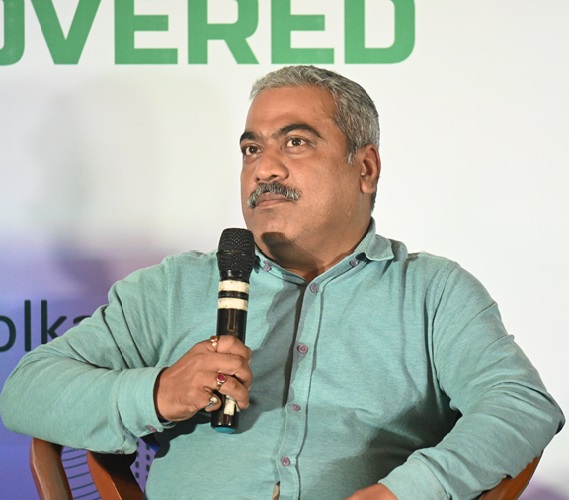 ARIJIT DASGUPTA
ARIJIT DASGUPTA
CTO, INTELLIGENT INFOSYS
In 2025, the cyber threat landscape is more dynamic than ever—driven by digital acceleration, AI proliferation, and an expanding threat surface. To stay ahead, CIOs and CXOs are no longer just stewards of technology—they are strategic defenders of enterprise resilience, embedding AI as a cornerstone of their cybersecurity strategy.
One of the most transformative developments is the rise of agentic AI systems—AI agents capable of autonomously planning and executing tasks aligned with user-defined goals. These tools are now being deployed to monitor network activity, detect anomalies, and respond to threats in real time, significantly reducing response times and mitigating risks before they escalate.
AI-powered threat detection systems have become essential, offering deep analytics to spot irregular patterns, assess vulnerabilities, and proactively alert teams. Enterprises are integrating these tools into Zero Trust Architectures (ZTA) that assume no user or device is trustworthy by default—ensuring continuous verification and granular access controls. AI-enhanced Identity and Access Management (IAM) systems also ensure continuous authentication and prevent credential-based attacks.
For many CIOs and CISOs, the shift to automated security operations is proving vital. AI not only reduces human error but also allows real-time remediation of threats through software-defined perimeters (SDP) and secure access protocols. These innovations protect digital assets by rendering them invisible to unauthorized users.
The broader strategic role of CIOs is also evolving. Today’s CIO is a business enabler—driving innovation, leading digital transformation initiatives, and aligning tech investments with revenue goals. At the same time, they are fostering a security-first culture, ensuring that employees across all levels are trained in cyber hygiene. This includes ongoing education on phishing, data handling, and the importance of reporting threats without fear.
Meanwhile, other CXOs are also stepping up. CTOs are exploring emerging technologies like neuromorphic computing to power AI infrastructure more efficiently. CISOs are leading predictive, compliance-oriented security programs, while DPOs ensure data governance and ethical AI use align with evolving global privacy regulations.
Together, these roles are converging around a shared mission: to harness AI not just for operational gain, but to defend the enterprise from within. In this era of intelligent cybersecurity, AI isn’t just a tool—it’s the front line.
-----------------------------------------------------------------------------------------------------------------------------------------
Workforce Cyber Vigilance has become a Core Business Strategy!
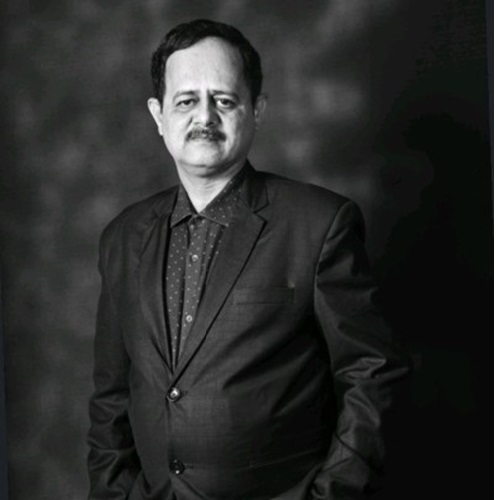 DR. DEEPAK KALAMBKAR
DR. DEEPAK KALAMBKAR
DIRECTOR INFORMATION SECURITY, FLEXM
AI-DRIVEN CYBER DEFENSE
As businesses in 2025 embrace rapid digital transformation, cyber vigilance has become a critical element of enterprise strategy. Technologies like AI, automation, and zero-trust frameworks are now central to how CIOs and CXOs protect organizations against evolving cyber threats.
CIOs are no longer just managing IT infrastructure—they are driving business strategy, innovation, and cybersecurity. With AI becoming a key enabler of intelligent operations, CIOs are integrating it across systems to identify threats in real-time, predict vulnerabilities, and automate response mechanisms. This shift is empowering organizations to prevent breaches before they occur, rather than react after the damage is done.
By aligning AI investments with business goals, CIOs are improving efficiency, enabling data-driven decisions, and helping organizations stay competitive in a threat-prone digital world.
Zero-trust security has become the standard model, and AI plays a vital role in making it work effectively. No device or user is trusted automatically. Instead, AI verifies credentials, location, and usage behavior before granting access. This intelligent verification helps protect sensitive data even in cloud-based, distributed environments.
Combined with automation, AI allows for continuous network monitoring, faster detection of malicious activity, and immediate isolation of threats—without human intervention.
CXOS CHAMPIONING A SECURITY-FIRST CULTURE
CXOs, including CISOs and CTOs, are championing the development of a cyber-aware workforce. AI supports these efforts by monitoring user behavior and highlighting anomalies, which can indicate internal threats or human errors. Companies are implementing AI-powered tools to customize cybersecurity training, simulate phishing attacks, and create tailored awareness programs that adapt based on employee risk profiles.
Together with strict password policies, multi-factor authentication, and access controls, these initiatives help build a culture where cyber hygiene is part of everyday operations.
A COLLABORATIVE CYBERSECURITY LEADERSHIP
The responsibilities of CIOs, CTOs, CISOs, and DPOs are now closely linked. While CIOs focus on aligning technology with business goals, CISOs ensure robust defense systems, and DPOs uphold data privacy standards. AI is the common thread that connects these roles— helping each leader safeguard data, ensure compliance, and drive innovation.
In a world of increasing cyber risks, CIOs and CXOs are turning AI into a frontline cyber defense—making security not just a system, but a core part of business resilience.
--------------------------------------------------------------------------------------------------------------------------------------------------
AI-Powered Cyber Defense: The New Priority for CIOs and CXOs
 DR. NILESH ROY (PH.D. - IT)
DR. NILESH ROY (PH.D. - IT)
CYBERSECURITY TECHLEADER AND REGULATORY IT ADVISOR
As the digital landscape evolves rapidly in 2025, enterprises are leveraging artificial intelligence (AI) not only to boost performance but also to enhance cybersecurity. With threats becoming more complex and persistent, CIOs and CXOs are adopting AI as a foundational component of enterprise- wide cyber defense strategies.
KEY TECH TRENDS DRIVING AI INTEGRATION
Modern enterprise environments are shaped by generative AI, edge computing, multi-cloud adoption, and the expansion of the Internet of Things (IoT). These technologies enable real-time analytics, improve customer personalization, and support agile operations across industries. As organizations move toward hybrid work models, cybersecurity becomes even more critical. The adoption of Zero Trust architectures and ESG-driven Green IT strategies reflect a broader shift toward responsible, resilient, and secure digital transformation.
CIOS AS STRATEGIC ENABLERS OF CYBERSECURITY
CIOs have evolved beyond traditional IT roles. Today, they act as strategic leaders who guide innovation and long-term planning. By embedding AI across business processes and aligning technology with revenue, customer experience, and sustainability goals, CIOs are shaping enterprise resilience. They are active participants in boardroom decisions, influencing everything from mergers and acquisitions to ESG initiatives. With cybersecurity now a key metric of business health, CIOs are at the forefront of ensuring a robust digital defense posture.
OPERATIONALIZING AI IN ENTERPRISE SECURITY
AI is redefining how organizations detect, respond to, and prevent cyber threats. Machine learning models are deployed to identify anomalies, detect zero-day attacks, and enable automated incident response. Automation also plays a key role in managing identity access, applying security patches, and enforcing Zero Trust policies that verify every access request—regardless of user location or credentials. Additionally, AI helps prioritize vulnerabilities based on potential business impact, allowing security teams to act more effectively.
Creating a cyber-aware workforce is essential. Enterprises are rolling out role-based training, phishing simulations, and gamified learning to embed secure practices. Executive leadership reinforces this mindset by making cybersecurity a core organizational value, supported by clear reporting protocols and performance indicators. It’s no longer just an IT concern—it’s everyone’s responsibility.
COLLABORATION ACROSS EXECUTIVE ROLES
The roles of CIOs, CTOs, CISOs, and DPOs are becoming more interconnected. While each retains a distinct focus, collaboration is essential in managing risk, compliance, and innovation. As AI becomes central to both offense and defense in cybersecurity, these roles must work together to build digital trust, ensure data protection, and guide future-ready enterprises.
--------------------------------------------------------------------------------------------------------------------------------------------------
From IT to Intelligence: CIOs Steering AI-Led Cyber Resilience
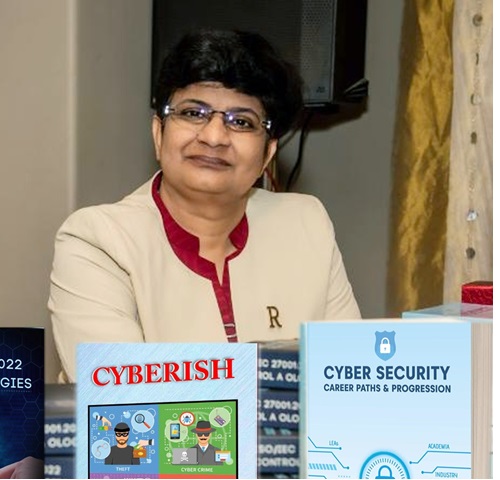 DR. RAKHI R WADHWANI
DR. RAKHI R WADHWANI
SENIOR ASSESSOR, ISOQAR (INDIA) PVT. LTD.
In 2025, the role of the Chief Information Officer (CIO) has expanded far beyond traditional IT oversight. Today’s CIO is a strategic leader—shaping business resilience, innovation, and security through the intelligent use of Artificial Intelligence (AI). With AI now deeply embedded in enterprise ecosystems, CIOs are leveraging it as a core defense mechanism against sophisticated cyber threats.
CIOS ARE USING AI TO EMPOWER BUSINESSES
AI is powering a new wave of hyperautomation, combining robotic process automation (RPA), machine learning, and analytics to streamline workflows and minimize manual intervention. AI copilots and assistants are integrated across business units, boosting productivity while reducing human error—often the root cause of security breaches.
As cyber risks grow more complex, CIOs are implementing AI-enhanced threat detection tools that proactively monitor anomalies across networks, applications, and endpoints. These systems learn from behavioral patterns to identify suspicious activity, enabling faster incident response with minimal disruption. In parallel, AI is optimizing identity and access management through behavioral biometrics and adaptive authentication, reducing exposure to credential-based attacks.
CIOs are also embedding AI into Zero Trust architectures, ensuring continuous verification of all users and devices. Microsegmentation and AI-driven authentication have become foundational to enterprise security. With multi-cloud and hybrid infrastructures becoming standard, CIOs rely on AI to orchestrate secure data flow, monitor compliance, and defend against post-quantum threats.
SECURING THE BUSINESS WHILE DRIVING TRANSFORMATION
AI’s strategic value lies in its dual role - enhancing cybersecurity and accelerating innovation. CIOs are aligning AI investments with broader business goals such as revenue growth, digital customer experience, and operational agility. By integrating AI across analytics platforms, they are enabling real-time decision-making and helping business leaders swiftly respond to market dynamics.
CIOs are also playing a key role in fostering a security-first culture. Through AI-powered training programs, phishing simulations, and adaptive risk awareness modules, they’re ensuring that cybersecurity becomes embedded in everyday operations. Working alongside CISOs and DPOs, they are making privacy, compliance, and risk management a shared responsibility.
In today’s evolving digital environment, AI is not just a tool-it’s a strategic shield. CIOs are leading the charge, using AI to transform
security from a reactive necessity into a proactive, intelligent layer of enterprise resilience.
-------------------------------------------------------------------------------------------------------------------------------------------
Powering the Future: AI is the new Frontline of Cyber Defense for CIOs/ CXOs
 SIBASIS PRADHAN
SIBASIS PRADHAN
TECH LEAD, RIVERGO AUTOMATION PVT. LTD.
Today, artificial intelligence (AI) has become an indispensable pillar of enterprise security and business resilience. CXOs—spanning CIOs, CTOs, CISOs, and DPOs—are strategically deploying AI technologies across their organizations to defend against evolving cyber threats, enhance operational efficiency, and support long-term business goals.
AI AT THE HEART OF HYPERAUTOMATION AND CYBER DEFENSE
Enterprises are embracing hyperautomation, combining AI-driven decision intelligence with robotic process automation to optimize workflows. This approach not only accelerates productivity but also enhances security. AI-powered cybersecurity systems are proactively detecting threats through behavioral analytics, anomaly detection, and real-time incident response—minimizing risk and downtime.
Composable applications built on APIs and microservices allow for flexible, secure systems that are rapidly adjustable. Meanwhile, zero-trust frameworks, powered by AI, enforce strict verification protocols across devices, users, and applications, ensuring that access is continuously validated regardless of location or network.
EVOLVING CXO ROLES IN A THREAT-RICH LANDSCAPE
Today’s CIO is no longer just a technology manager—they are strategic leaders driving innovation, shaping business models, and aligning IT investments with market opportunities. They work closely with business units to implement AI in ways that generate revenue, improve customer experiences, and reduce vulnerabilities.
CTOs are pioneering the use of emerging technologies such as AI, edge computing, and immersive enterprise environments, including digital twins and metaverse-based training. CISOs, on the other hand, are evolving into digital risk officers, overseeing end-to-end cyber resilience frameworks and guiding incident response powered by AI analytics. DPOs are becoming vital stewards of data privacy and ethics, ensuring AI is used responsibly while remaining compliant with evolving data protection laws.
BUILDING A CULTURE OF SECURITY AWARENESS
AI is also enabling a deeper shift in employee behavior. Organizations are rolling out continuous security education through gamified platforms, phishing simulations, and department-specific training modules. Security champions embedded within teams serve as local advocates, while leadership accountability reinforces security as an enterprise-wide priority.
A UNIFIED, INTELLIGENT DEFENSE STRATEGY
While the roles of CIOs, CTOs, CISOs, and DPOs remain distinct, collaboration is essential. AI acts as the connective tissue, enabling smarter, faster, and more scalable security decisions. Together, CXOs are embedding AI not just into infrastructure, but into the culture and strategy of the enterprise—ensuring businesses stay protected, compliant, and future-ready.
See What’s Next in Tech With the Fast Forward Newsletter
Tweets From @varindiamag
Nothing to see here - yet
When they Tweet, their Tweets will show up here.







